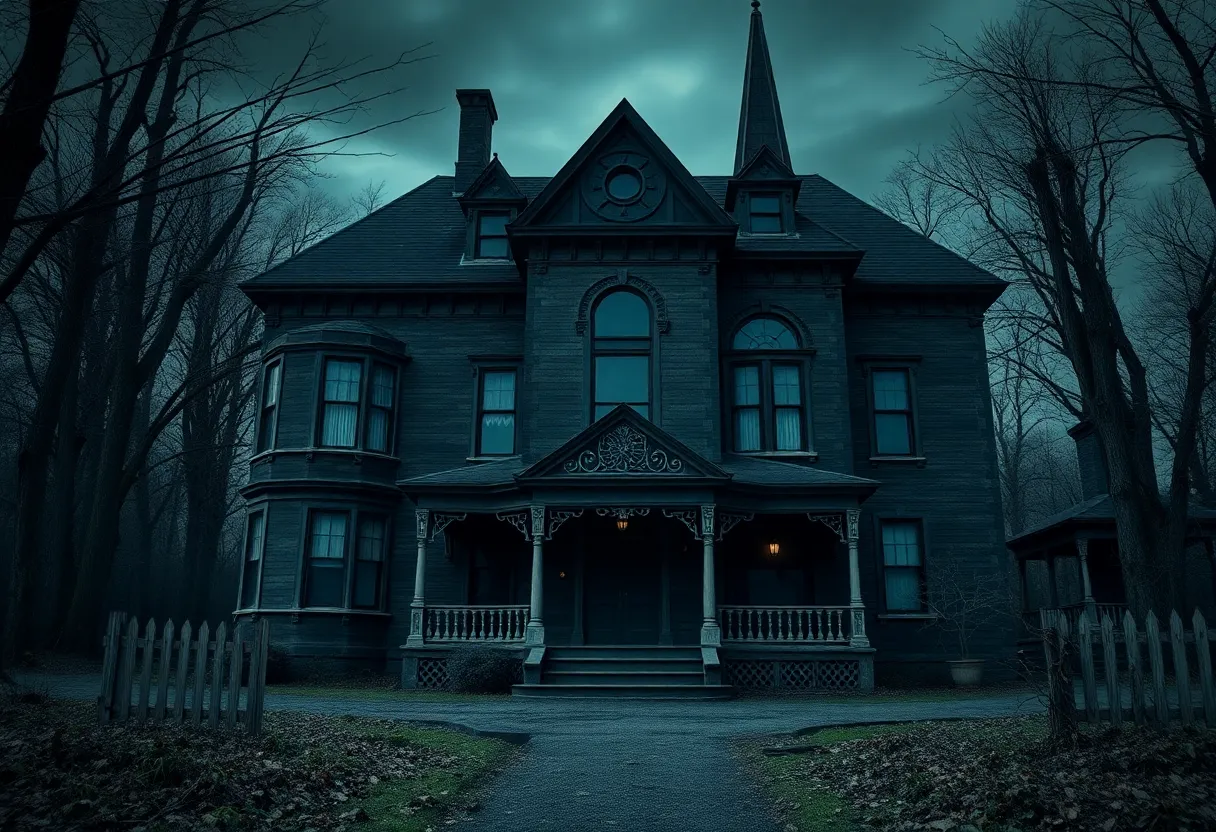News Summary
H.H. Holmes, infamous as one of America’s first serial killers, was executed on May 7, 1896, at Moyamensing Prison in Philadelphia. With a chilling confession of 27 murders, Holmes’s true victim count may surpass 200. His notorious ‘Murder Castle’ in Chicago served as his sinister lair, designed for torturous killings. Even after his execution, fascination with Holmes and his heinous deeds continues, prompting discussions about the nature of evil and the impact of his legacy on American criminal history.
Philadelphia – H.H. Holmes, known as one of America’s first serial killers, was executed on May 7, 1896, at Moyamensing Prison in Philadelphia. His criminal activities have left a lasting mark on American history, as he confessed to 27 murders, though some biographers believe the true number of his victims could exceed 200. Holmes gained infamy for constructing a “House of Horrors,” also referred to as the “Murder Castle,” in Chicago, which he designed with secret passageways, trapdoors, airless vaults, and dissecting tables intended for torturing and killing his victims.
During the years 1886 to 1894, Holmes specifically targeted young women, luring them with promises of wealth or marriage. In many cases, he had them sign life insurance policies which he would later exploit after murdering them. In 1894, Holmes fled Chicago to avoid creditors and returned to Philadelphia, where he established a bogus patent office in partnership with an accomplice, Benjamin Pitezel. Instead of the planned fake death to collect a $10,000 insurance payout, Holmes murdered Pitezel by setting him ablaze in their shared office.
Holmes was convicted of Pitezel’s murder in the fall of 1895 and sentenced to death by hanging. Prior to his execution, a confession attributed to Holmes was published, expressing a belief that he was inherently evil. On the day of his execution, substantial crowds gathered outside the prison, driven by morbid curiosity regarding the notorious killer. Despite proclaiming his innocence as he faced the gallows, Holmes was ultimately fitted with a noose and cap before reportedly bidding farewell.
The Murder Castle
The “Murder Castle” built by Holmes amplified his notoriety, especially during the Chicago World’s Fair in 1893. This diabolical structure was designed not only to hide his crimes but also to serve as a deadly trap for unsuspecting victims. The intricate design included rooms specifically engineered for torture and concealment, leading to its dark reputation. Holmes’s background as a pharmacist allowed him to exploit his knowledge in furthering his sinister intentions.
Impact and Legacy
The impact of H.H. Holmes on American criminal history is substantial. His modus operandi has inspired countless books, films, and other forms of media that portray the criminal psychology of serial killers. Even after his execution, fascination with Holmes persists, with various theories surrounding his life and potential escape from justice. Recent developments include efforts by his great-great-grandson, Jeff Mudgett, who has initiated DNA exhumation processes to seek clarity about the authenticity of Holmes’ remains and to understand more about the infamous figure’s legacy.
The Aftermath
In the years following his execution, Holmes’s methods and the chilling details of his crimes have continued to captivate the public. His legacy raises questions about the nature of evil and the darker aspects of human behavior. While H.H. Holmes was undoubtedly a product of his time, his actions have led to an ongoing dialogue about crime, punishment, and the psychological profiles of serial offenders.
In conclusion, H.H. Holmes’s tale of horror is a significant chapter in American criminal history that continues to provoke interest and reflection. His life as a conman, murderer, and the mastermind behind a twisted abode of death remains a poignant reminder of the capacity for human darkness.
Deeper Dive: News & Info About This Topic
HERE Resources
Additional Resources
- Inquirer: H.H. Holmes Execution
- History.com: A Serial Killer is Hanged
- PhillyVoice: Digging at the Grave of H.H. Holmes
- NBC Philadelphia: Legend of H.H. Holmes Persists
- Daily Record: H.H. Holmes and Jack the Ripper
- Wikipedia: H.H. Holmes
- Google Search: H.H. Holmes
- Google Scholar: H.H. Holmes
- Encyclopedia Britannica: H.H. Holmes
- Google News: H.H. Holmes

Author: STAFF HERE PHILADELPHIA WRITER
The PHILADELPHIA STAFF WRITER represents the experienced team at HEREPhiladelphia.com, your go-to source for actionable local news and information in Philadelphia, Philadelphia County, and beyond. Specializing in "news you can use," we cover essential topics like product reviews for personal and business needs, local business directories, politics, real estate trends, neighborhood insights, and state news affecting the area—with deep expertise drawn from years of dedicated reporting and strong community input, including local press releases and business updates. We deliver top reporting on high-value events such as Mummers Parade, Philadelphia Flower Show, and Thanksgiving Day Parade. Our coverage extends to key organizations like the Greater Philadelphia Chamber of Commerce and United Way of Greater Philadelphia, plus leading businesses in telecommunications, food services, and healthcare that power the local economy such as Comcast, Aramark, and Children's Hospital of Philadelphia. As part of the broader HERE network, we provide comprehensive, credible insights into Pennsylvania's dynamic landscape.





